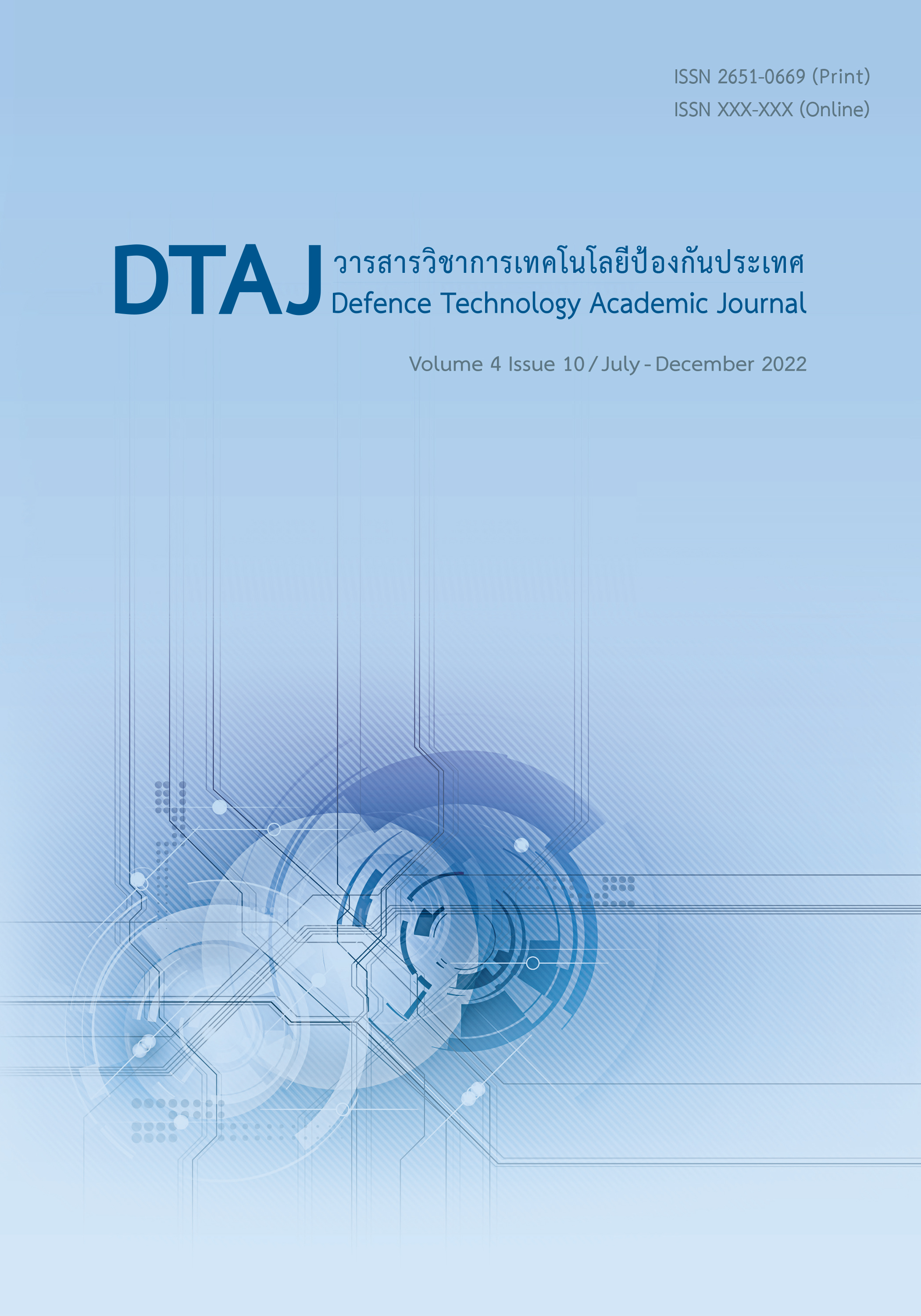Fundamentals, Status, and Research Development on Anode Materials Based Mesoporous Carbons for Sodium-Ion Batteries
Main Article Content
Abstract
The development of energy production and storage technologies with low-cost and safety is the truly global coalition of every country for carbon neutrality by 2050. During the past decade, lithium-ion battery (LIB) advancement has improved today’s modern world and empowered the world’s electric grids. LIBs have been widely deployed in the portable electronics market and electrical vehicle mobility. The concerns for Li availability are increasing due to expected demand growth associated with the significant increase in the LIB market. Therefore, whether LIBs alone can satisfy the rapid development of large-format energy storage systems (ESSs) remains unclear. To mitigate these issues, the researchers have focused on alternative energy storage systems. Sodium-ion batteries (SIBs) are the promising alternatives for large-scale energy storage due to the similar operating principle, low cost, and abundance of sodium. Due to their high energy density (ranging between 160 - 220 Wh kg¯1 ), specific capacity, and long cycle life, SIBs have also been successfully applied to unmanned aerial vehicles. Mesoporous carbon materials, transition metal sulfides, and carbon/transition metal compound composites are considered as the promising anode materials for SIBs in order to improve electrochemical sodium storage behavior. This article systematically summarizes the latest research progress of materials and proposes future directions for SIBs. This presents the implication of SIBs from detailing the importance of anode materials.
Downloads
Article Details

This work is licensed under a Creative Commons Attribution-NonCommercial-NoDerivatives 4.0 International License.
Journal of TCI is licensed under a Creative Commons Attribution-NonCommercial-NoDerivatives 4.0 International (CC BY-NC-ND 4.0) licence, unless otherwise stated. Please read our Policies page for more information...
References
J.-M. Tarascon, “Is lithium the new gold?,” Nat. Chem., vol. 2, no. 6, pp. 510 - 510, 2010.
S.-W. Kim, D.-H. Seo, X. Ma, G. Ceder, and K. Kang, “Electrode Materials for Rechargeable Sodium-Ion Batteries: Potential Alternatives to Current Lithium-Ion Batteries,” Adv. Energy Mater, vol. 2, no. 7, pp. 710 - 721, 2012.
T. Oshima, M. Kajita, and A. Okuno, “Development of Sodium-Sulfur Batteries,” Int. J. Appl. Ceram. Technol., vol. 1, no. 3, pp. 269-276, 2004.
Sodium-Ion Batteries Market To 2024 Key Application Categories (Consumer Electronics, Automotive, Power, Industrial), Regional Segmentation, Competitive Dynamics, M&A Insights, Pricing Analysis (OPP, IPP, RAP) and Segment Forecast, Ameri Res.
Y. Fang, L. Xiao, J. Qian, Y. Cao, X. Ai, Y. Huang, and H. Yang, “3D Graphene Decorated NaTi2(PO4)3 Microspheres as a Superior High-Rate and Ultracycle-Stable Anode Material for Sodium Ion Batteries,” Adv. Energy Mate., vol. 6, no. 19, 2016, doi: 10.1002/aenm.201502197.
M. Farag, “Lithium-Ion Batteries: Modelling and State of Charge Estimation,” M.S. thesis, Dept. Mech. Eng., McMaster Univ., Ontario, Canada, 2013.
M. S. Whittingham, “Chemistry of Intercalation Compounds: Metal Guests in Chalcogenide Hosts,” Prog. Solid State Chem., vol. 12, no. 1, pp. 41 - 99, 1978.
C. Delmas, J.-J. Braconnier, C. Fouassier, and P. Hagenmuller, “Electrochemical Intercalation of Sodium in NaxCoO2 Bronzes,” Solid State Ion., vol. 3-4, pp. 165 - 169, 1981.
K. M. Abraham, “Intercalation Positive Electrodes for Rechargeable Sodium Cells.” Solid State Ion., vol. 7, no. 3, pp. 199 - 212, 1982.
R. Fong, U. von Sacken, and J. R. Dahn, “Studies of Lithium Intercalation into Carbons Using Nonaqueous Electrochemical Cells,” J. Electrochem. Soc., vol. 137, no. 7, pp. 2009 - 2013, 1990.
H. Kim et al., “Sodium Intercalation Chemistry in Graphite,” Energy Enviro. Sci., vol. 8, no. 10, pp. 2963 - 2969, 2015.
V. Palomares, P. Serras, I. Villaluenga, K. B. Hueso, J. Carretero-González, and T. Rojo, “Na-ion Batteries, Recent Advances and Present Challenges to Become Low Cost Energy Storage Systems,” Energy Environ. Sci., vol. 5, no. 3, pp. 5884 - 5901, 2012.
S. Wenzel, T. Hara, J. Janek, and P. Adelhelm, “Room-temperature Sodium-ion Batteries: Improving the Rate Capability of Carbon Anode Materials by Templating Strategies,” Energy Environ. Sci., vol. 4, no. 9, pp. 3342 - 3345, 2011.
Y. Yan, Y.-X. Yin, Y.-G. Guo, and L.-J. Wan, “A Sandwich-Like Hierarchically Porous Carbon/Graphene Composite as a High-Performance Anode Material for Sodium-Ion Batteries,” Adv. Energy Mater., vol. 4, no. 8, p. 1301584, 2014.
Y. Mao et al., “Lithium storage in Nitrogen-rich Mesoporous Carbon Materials,” Energy Environ. Sci., vol. 5, no. 7, pp. 7950 - 7955, 2012.
T. Chen et al., “Porous Nitrogen-doped Carbon Microspheres as Anode Materials for Lithium Ion Batteries,” Dalton Trans., vol.43, no. 40, pp. 14931 - 14935, 2014.
Y. Zhou et al., “Hollow Nanospheres of Mesoporous Co9S8 as a High-capacity and Long-life Anode for Advanced Lithium Ion Batteries,” Nano Energy, vol. 12, pp. 528 - 537, 2015.
X. Liu, K. Zhang, K. Lei, F. Li, Z. Tao, J. Chen, “Facile Synthesis and Electrochemical Sodium Storage of CoS2Micro/Nano-structures,” Nano Res., vol. 9, no. 1, pp. 198 - 206, 2016.
R. Wu et al., “In-Situ Formation of Hollow Hybrids Composed of Cobalt Sulfides Embedded within Porous Carbon Polyhedra/Carbon Nanotubes for High-Performance Lithium-Ion Batteries,” Adv. Mater., vol. 27, no. 19, pp. 3038 - 3044, 2015.
Q. Wang et al., “Facile Synthesis of Ultrasmall CoS2 Nanoparticles within Thin N-Doped Porous Carbon Shell for High Performance Lithium-Ion Batteries,” Small, vol. 11, no. 21, pp. 2511 - 2517, 2015.


